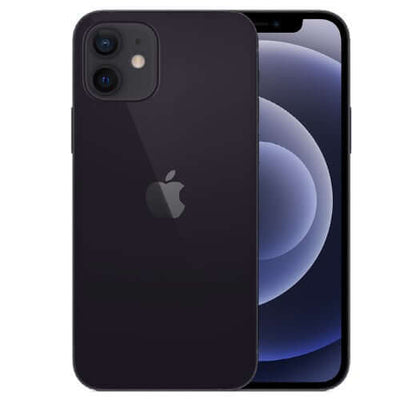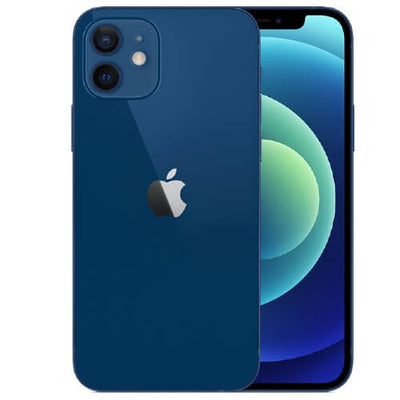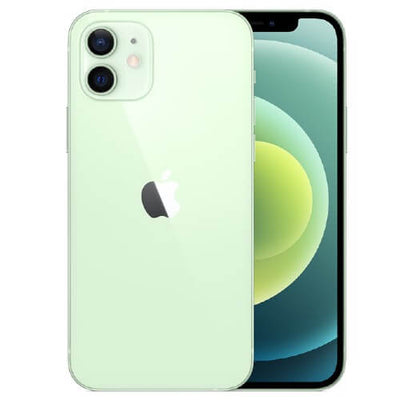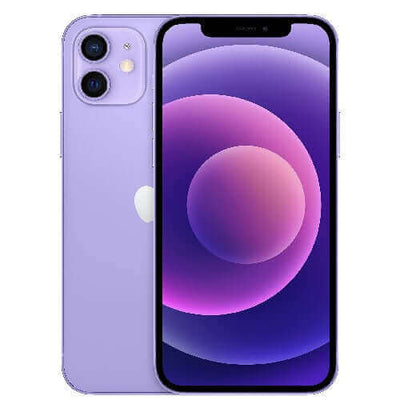Introduction
The iPhone 13 and iPhone 14 represent the latest offerings from Apple, each with its own set of features and enhancements. To make an informed decision between the two, it's essential to delve into their disparities.
• Overview of iPhone 13 and iPhone 14
Apple unveiled the iPhone 13 last year, followed by the iPhone 14's release in September. Both iterations boast an aluminum frame paired with glass panels on the front and back, fortified with a ceramic shield for added robustness. Their sleek designs and compact form factors make them visually appealing, with comparable camera module arrangements.
• Price Difference Between the Two Models
In terms of pricing, the iPhone 13 is priced around SAR 50,000, while its successor, the iPhone 14, commands a slightly higher price tag of approximately SAR 80,000. However, it's worth noting that discounts and promotions, such as those offered by credit cards, can influence the final price discrepancy between the two models.
• Considerations for Choosing Between the Two
When weighing the options between the iPhone 13 and iPhone 14, several factors come into play, including the processor, RAM capacity, and battery life. Both devices are powered by the A15 chip, although the iPhone 14 edges slightly ahead with superior GPU and graphics capabilities. Moreover, the iPhone 14 boasts an additional 2GB of RAM compared to its predecessor, leading to enhanced overall performance. Nonetheless, if the features of the iPhone 13 suffice for your needs and you don't necessarily require the incremental enhancements of the iPhone 14, opting for the former may prove to be more economically viable.
Build and Design
The iPhone 13 and iPhone 14 share strikingly similar build and design features, epitomizing Apple's signature elegance. Crafted with an aluminum frame and glass panels front and back, both exude a sophisticated, high-end aura. Safeguarding the front is a ceramic shield, fortifying the devices against accidental bumps and drops.
In terms of aesthetics, distinguishing between the two becomes a subtle game. Their compact forms and seamlessly integrated camera modules make for a seamless visual experience. The color palette adds a touch of personalization: iPhone 13 flaunts vibrant options like purple and blue, while iPhone 14 introduces the sophisticated Starlight and Midnight hues. Opting for purple or blue? That's the iPhone 13. But if you're drawn to Starlight or Midnight, you're looking at the iPhone 14 – though you'd be hard-pressed to spot a visible disparity between the two.
Weight-wise, iPhone 13 tips the scales at 174 grams, while iPhone 14 comes in slightly lighter at 172 grams. However, the variance is negligible, hardly perceptible in everyday handling. Both models boast IP68 certification, guaranteeing water resistance up to 6 meters for 30 minutes, providing peace of mind in various environments.
On the display front, both flaunt a captivating Super Retina XDR display spanning 6.1 inches. With an identical resolution boasting 460 pixels per inch, the visual experience remains consistent across the board. Even the materials and border design used for the display maintain parity between the two models.
In essence, whether you're holding an iPhone 13 or an iPhone 14, the experience is synonymous. Minor discrepancies in color preferences aside, choosing between them boils down to individual taste or any additional features exclusive to the iPhone 14 that might sway your decision.
Display
When it comes to the display, there's hardly any discernible variance between the iPhone 13 and iPhone 14. Both versions boast a 6.1-inch Super Retina XDR display with a resolution of 1170 x 2532 pixels and a density of 460 pixels per inch. Brightness levels remain consistent across the board, with standard brightness at 8 nits and peak brightness at 12 nits.
Vibrant colors and sharp imagery characterize the viewing experience on both models, ensuring an immersive experience whether you're watching videos or browsing through photos. The build quality and protection for the display are also on par, featuring durable aluminum-grade construction and a solid border design. High-quality materials guarantee a robust and enduring screen.
Whether you opt for the iPhone 13 or iPhone 14, you're in for a treat with a stunning display that excels in color accuracy and sharpness. The high pixel density ensures that visuals and text appear crystal clear, elevating your overall viewing pleasure.
To sum up, there's virtually no divergence in display specifications between the iPhone 13 and iPhone 14. Both deliver a top-tier display that meets your visual demands.
Processor
When comparing the processors of the iPhone 13 and iPhone 14, it's evident that there are some noteworthy distinctions to take into account.
• A15 Bionic Chip Comparison in iPhone 13 and iPhone 14
Both the iPhone 13 and iPhone 14 boast the A15 Bionic chip, delivering swift and efficient performance. However, the iPhone 14 showcases slight enhancements in terms of graphics rendering and processing prowess compared to its predecessor, the iPhone 13. Consequently, the iPhone 14 might be marginally better equipped to tackle graphics-intensive tasks or demanding applications.
• Minor Enhancements in Graphics and RAM for iPhone 14
Apart from the A15 Bionic chip, the iPhone 14 also sports a slightly superior GPU, promising improved graphics performance. Furthermore, the iPhone 14 offers an additional 2GB of RAM compared to the iPhone 13. While this may not translate into a substantial disparity in everyday usage, it can contribute to smoother multitasking and overall performance enhancement.
• Comparable Performance Levels
In essence, there's no significant gap in performance between the iPhone 13 and iPhone 14. Both models deliver rapid and efficient performance, courtesy of the A15 Bionic chip. Unless one specifically requires heightened graphics performance or extra RAM, there's no compelling reason to favor the iPhone 14 over the iPhone 13 solely based on processor capabilities.
Hence, when weighing the options between the iPhone 13 and iPhone 14, it's prudent to consider other factors such as price, design, display quality, and camera features. After all, the processor alone doesn't serve as a decisive factor in setting apart these two models.
Camera
When comparing the cameras of the iPhone 13 and iPhone 14, there are some key differences to consider.
• Comparison of camera specifications: 12MP lenses
Both the iPhone 13 and iPhone 14 are equipped with 12MP lenses, ensuring high-resolution photos.
• Difference in aperture: f/1.6 in iPhone 13 and f/1.5 in iPhone 14
The iPhone 13 features an aperture of f/1.6, while the iPhone 14 has a slightly wider aperture of f/1.5. This means that the iPhone 14 can capture slightly more light, resulting in potentially better low-light photos.
• Similar performance in ultra-wide angle and primary lenses
Both models offer similar performance in their ultra-wide angle and primary lenses. You can expect crisp and detailed photos with vibrant colors from both devices.
• Improved low-light performance in iPhone 14
One notable improvement in the iPhone 14 is its enhanced low-light performance. With the wider aperture and improved image processing, the iPhone 14 can produce better results in low-light conditions compared to the iPhone 13.
Overall, while both the iPhone 13 and iPhone 14 have capable cameras, the iPhone 14 offers slight advantages in terms of low-light performance. If photography in low-light conditions is important to you, the iPhone 14 may be the better choice.
Battery and Other Features
When we delve into the battery specifications of the iPhone 13 and its successor, the iPhone 14, a notable discrepancy emerges. The iPhone 13 houses a 2,240mAh battery, whereas the iPhone 14 flaunts a more capacious 3,279mAh battery. This translates to the iPhone 14 delivering extended usage periods compared to its predecessor.
Despite the variance in battery capacity, both models exhibit similar performance in terms of endurance. Users can anticipate a full day's worth of operation under moderate to heavy usage scenarios with either device. Whether opting for the iPhone 13 or the iPhone 14, users can rest assured that the battery life will seamlessly accommodate their daily activities.
Beyond battery capacity, the iPhone 14 distinguishes itself with additional features absent in the iPhone 13. One notable inclusion is Crash Detection, harnessing advanced sensors to identify potential car accidents. Upon detection, the iPhone 14 promptly alerts designated emergency contacts, providing them with your precise location to expedite assistance.
Another exclusive attribute of the iPhone 14 is its Satellite mode, facilitating connectivity in regions with limited or no cellular coverage. While this feature may not yet be accessible in certain regions like India, it serves as a valuable asset for individuals frequently navigating remote or rural areas.
In summary, both the iPhone 13 and iPhone 14 offer comparable battery performance. However, for those prioritizing supplementary functionalities such as Crash Detection and Satellite mode, the iPhone 14 emerges as the preferred choice. Conversely, if these features are of minimal importance, the iPhone 13 remains a compelling option, especially given its marginally lower price point.
FAQ
1. Should I upgrade from iPhone 13 to iPhone 14?
Deciding whether to upgrade from iPhone 13 to iPhone 14 depends on your specific needs and preferences. If you're someone who values having the latest technology and features, the iPhone 14 might be appealing to you. However, if your iPhone 13 still meets your needs and you're satisfied with its performance, camera quality, and features, you may not feel the need to upgrade just yet.
2. Which model should I choose if I plan to buy one?
When choosing between iPhone models, it's essential to consider factors such as your budget, desired features, and usage habits. If you're looking for the latest and most advanced technology, the iPhone 14 Pro or iPhone 14 Pro Max might be the right choice for you. On the other hand, if you're more budget-conscious or don't need all the bells and whistles, the standard iPhone 14 or iPhone 14 Mini could be suitable options.
3. Is there a significant difference in performance and camera quality?
While both the iPhone 13 and iPhone 14 offer impressive performance and camera quality, the iPhone 14 may have some enhancements due to its newer technology and updated features. However, whether these differences are significant enough to justify an upgrade depends on your individual needs and preferences. It's always a good idea to compare the specifications and test out both models if possible to see which one better suits your requirements.
4. What are the standout features in each model?
The standout features of each iPhone model can vary, but some key highlights include:
• iPhone 14 Pro/Pro Max:
Enhanced camera system with improved low-light performance, ProMotion display for smoother scrolling and gaming, upgraded processor for faster performance, and potentially new design elements.
• iPhone 14:
Upgraded processor for improved speed and efficiency, enhanced camera features, potential battery life improvements, and updated software features.
• iPhone 14 Mini:
Compact size for easy handling, updated processor for reliable performance, improved camera capabilities, and access to the latest iOS features.
Ultimately, the best choice for you depends on your specific needs, preferences, and budget. Consider your priorities regarding performance, camera quality, design, and any other features that are important to you when making your decision.





















